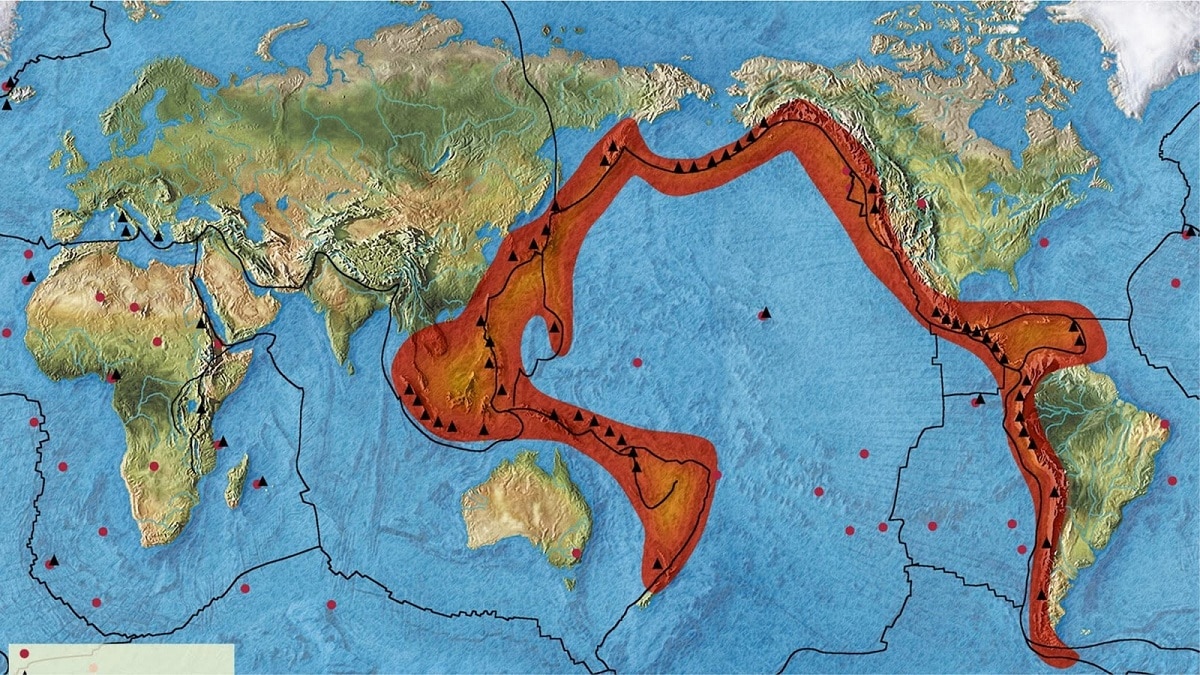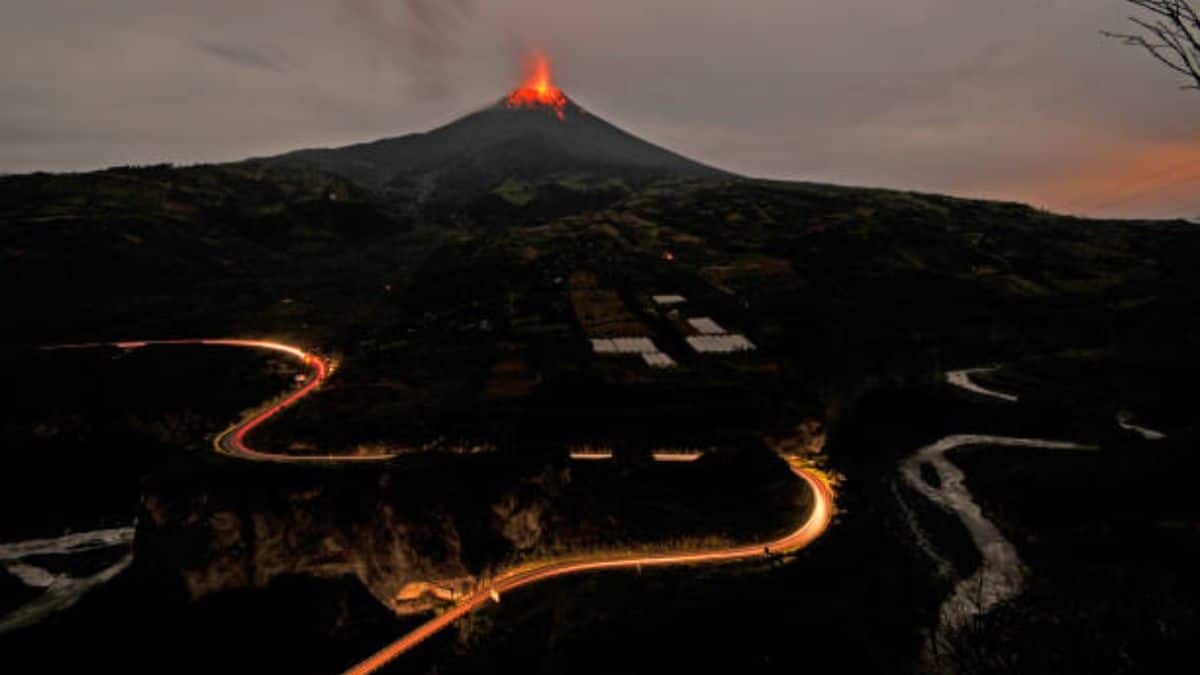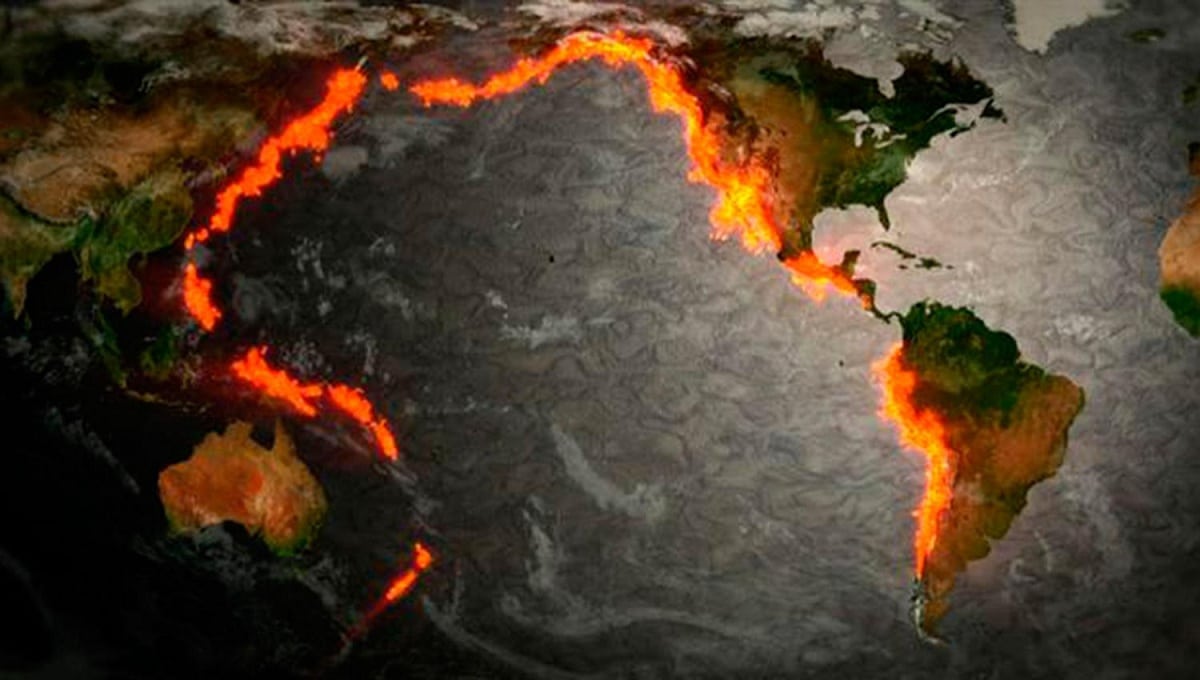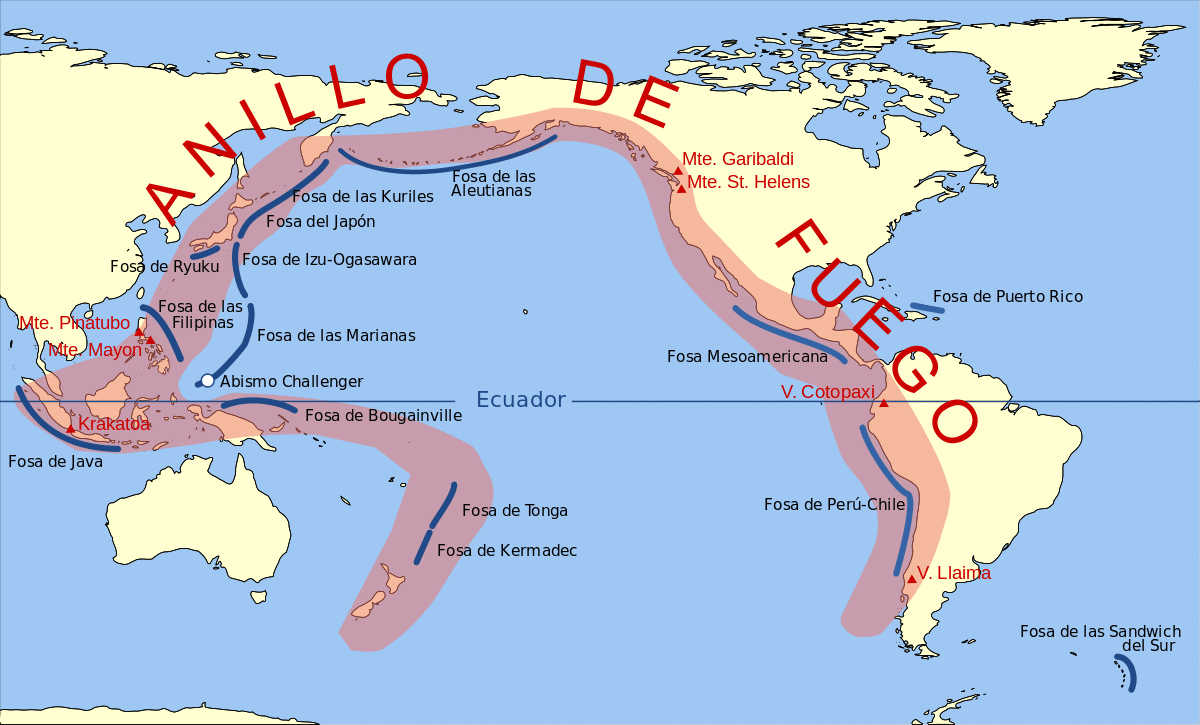
On this planet, some areas are more dangerous than others, so the names of these areas are more striking and you might think that these names refer to more dangerous things. In this case, we are going to talk about Ring of Fire from Pacific. This name refers to the area surrounding this ocean, where earthquakes and volcanic activities are very frequent.
In this article we are going to tell you everything you need to know about Ring of Fire, where it is located and what its characteristics are.
What is the Ring of Fire

In this horseshoe-shaped rather than circular area, a large number of earthquakes and volcanic activities have been recorded. This makes the area even more dangerous due to the possible disaster. This ring stretches from New Zealand to the entire west coast of South America, with a total length of more than 40.000 kilometers. It also traverses the entire coastline of East Asia and Alaska, passing through the northeastern part of North and Central America.
As mentioned in plate tectonics, this belt marks the edge where the Pacific Plate coexists with other smaller tectonic plates that make up the so-called crust. As an area with frequent earthquakes and volcanic activity, it is classified as a dangerous zone.
Training

The Pacific Ring of Fire is formed by the movement of tectonic plates. The plates are not fixed, but are constantly moving. This is due to the presence of convection in the mantle. The difference in the density of the material causes them to move and makes the tectonic plates move. In this way, a displacement of a few centimeters per year is achieved. We haven't noticed it on a human scale, but if we evaluate geologic time, it does show up.
Over millions of years, the movement of these plates triggered the formation of the Pacific Ring of Fire. Tectonic plates are not completely unified with each other, but there are spaces between them. They are usually about 80 kilometers thick and move by convection in the aforementioned mantle.
When these plates move, they tend to separate and collide with each other. Depending on the density of each one, one can also sink over the other. For example, the density of oceanic plates is greater than that of continental plates. For this reason, when two plates collide, they dive in front of the other plate. This movement and collision of plates produced strong geological activities at the edges of the plates. Therefore, these areas are considered particularly active.
The plate boundaries we find:
- Convergence limit. Within these limits are places where tectonic plates collide with each other. This can cause the heavier plate to collide with the lighter plate. In this way the so-called subduction zone is formed. One plate subducts over another. In these areas where this happens, there are a lot of volcanoes, because this subduction causes the magma to rise through the earth's crust. Obviously, this will not happen in an instant. This is a process that takes billions of years. This is how the volcanic arc was formed.
- Divergent limits. They are the exact opposite of convergent. Between these plates, the plates are in a state of separation. Each year they separate a little more, forming a new sea surface.
- Transformation limits. In these restraints, the plates are neither separated nor connected, they just slide parallel or horizontally.
- Hot spots. They are regions where the temperature of the mantle directly below the plate is higher than other regions. Under these conditions, hot magma can rise to the surface and produce more active volcanoes.
Plate boundaries are considered areas where geology and volcanic activity are concentrated. Therefore, it is normal that so many volcanoes and earthquakes are concentrated in the Pacific Ring of Fire. The problem is when an earthquake occurs in the sea and causes a tsunami and the corresponding tsunami. Under these circumstances, the danger will increase to the point that it can lead to disasters like those in Fukushima in 2011.
Volcanic activity of the Ring of Fire

You may have noticed that the distribution of volcanoes on earth is uneven. Quite the opposite. They are part of a larger area of geological activity. If there is no such activity, the volcano would not exist. Earthquakes are caused by the accumulation and release of energy between plates. These earthquakes are more common in our Pacific Ring of Fire countries.
And is that this Ring of Fire is the one that concentrates 75% of the active volcanoes of the entire planet. 90% of earthquakes also occur. There are innumerable islands and archipelagos together, as well as different volcanoes, with violent eruptions. Volcanic arches are also very common. They are chains of volcanoes located on top of subduction plates.
This fact makes many people around the world fascinated and terrified by this fire zone. This is because the power of their actions is enormous and can cause real natural disasters.
Countries through which it passes
This extensive tectonic chain spans four main territories: North America, Central America, South America, Asia, and Oceania.
- North America: It runs along the west coast of Mexico, the United States, and Canada, continuing to Alaska, and joining Asia in the North Pacific.
- Central America: includes the territories of Panama, Costa Rica, Nicaragua, El Salvador, Honduras, Guatemala and Belize.
- South America: In this territory it covers almost all of Chile and parts of Argentina, Peru, Bolivia, Ecuador and Colombia.
- Asia: it covers the east coast of Russia and continues through other Asian countries such as Japan, the Philippines, Taiwan, Indonesia, Singapore and Malaysia.
- Oceania: The Solomon Islands, Tuvalu, Samoa and New Zealand are countries in Oceania where the Ring of Fire exists.
I hope that with this information you can learn more about the Pacific Ring of Fire, its activity and its characteristics.